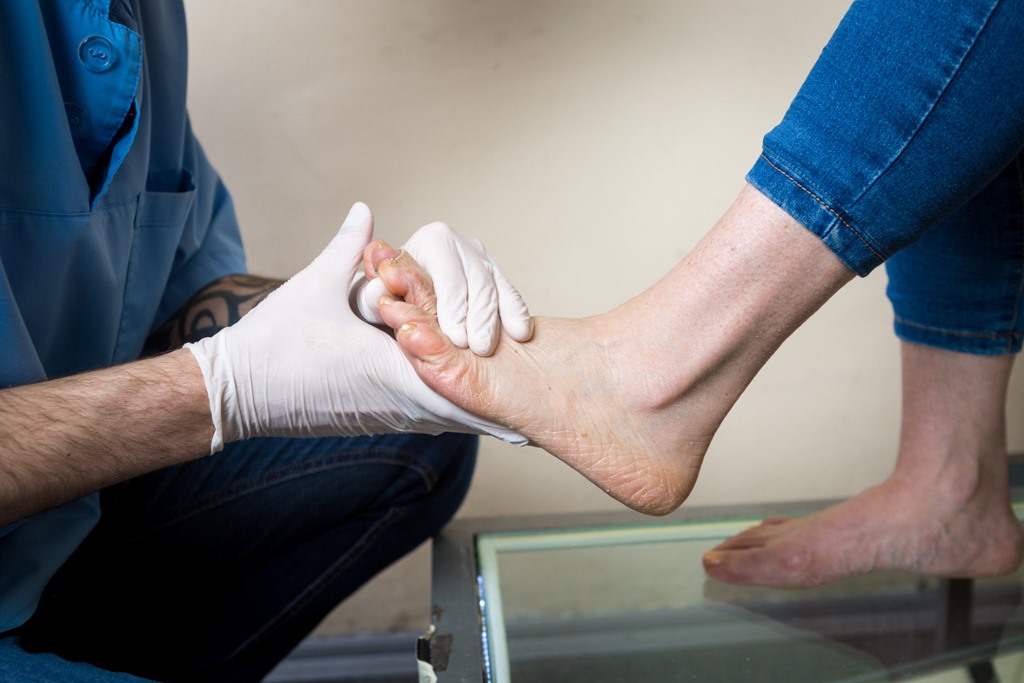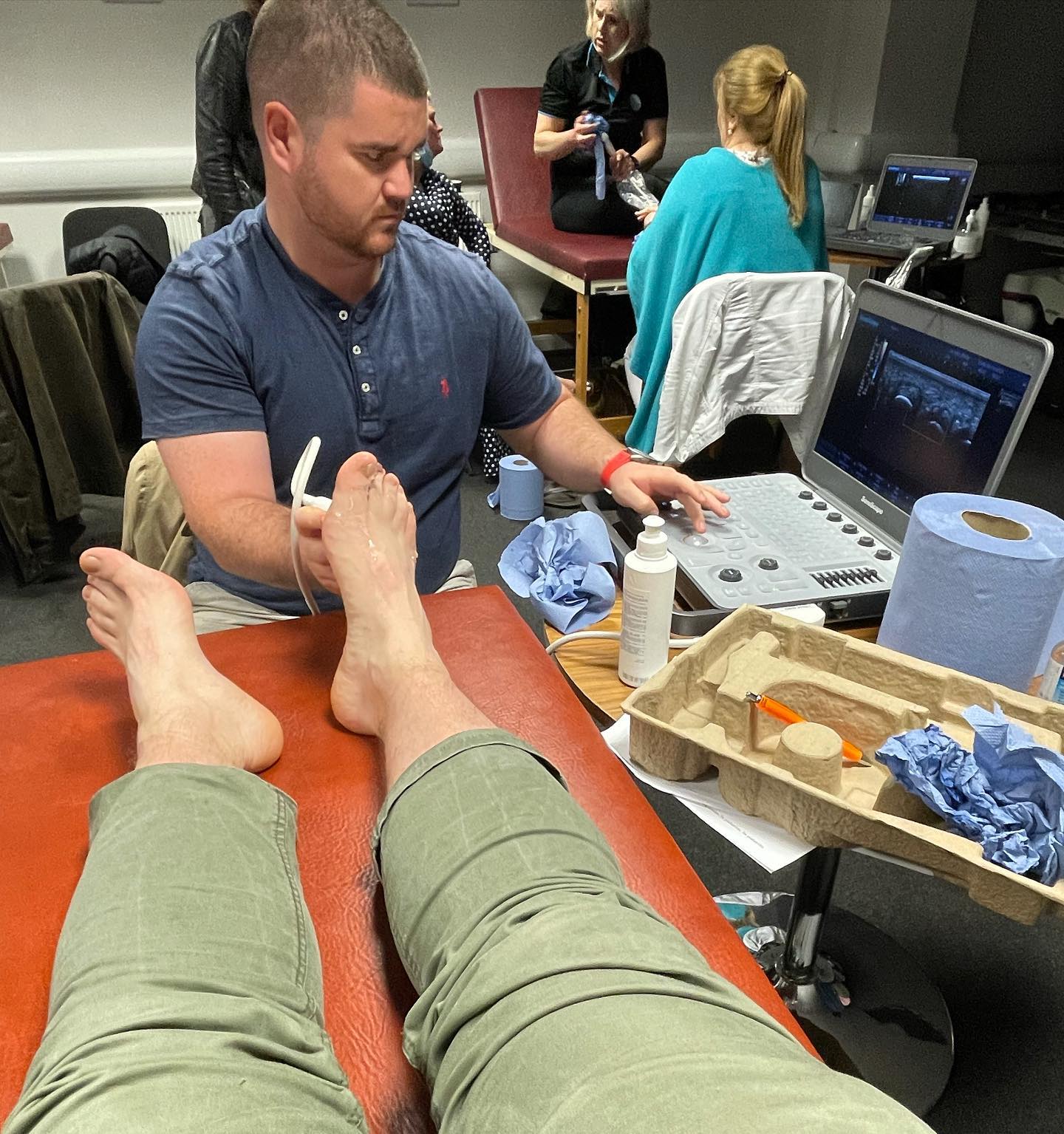Treatments Offered by Orthopedic Foot Doctors
Imagine waking up one morning and feeling a sharp, shooting pain coursing through your foot with every step you take. Suddenly, the simple act of walking becomes a grimace-inducing challenge. For millions of people suffering from foot and ankle disorders, this scenario is an everyday reality. Enter the orthopedic foot doctors—the unsung heroes who specialize in diagnosing, treating, and preventing foot and ankle problems, helping patients regain their mobility and improve their quality of life. If you’ve ever wondered what magic these experts wield to keep us on our feet, read on as we delve into the fascinating treatments offered by orthopedic foot doctors.
Non-Surgical Interventions: The First Line of Defense
Non-surgical interventions are often the first line of defense employed by orthopedic foot doctors when addressing foot and ankle issues. These approaches focus on relieving pain, reducing inflammation, and improving function without the need for invasive procedures. One common non-surgical treatment is the use of custom orthotics. These specially designed shoe inserts provide better support, correct abnormal walking patterns, and alleviate pressure on painful areas. By tailoring orthotics to an individual’s specific needs, orthopedic foot doctors can help patients achieve significant relief from conditions such as plantar fasciitis, flatfoot, and bunions.
Physical therapy is another crucial component of non-surgical intervention. Through a series of targeted exercises and manual techniques, physical therapists work under the guidance of orthopedic foot doctors to strengthen the muscles and tissues surrounding the foot and ankle. This can improve flexibility, enhance stability, and promote healing. Physical therapy is particularly effective for conditions such as Achilles tendonitis, ankle sprains, and tendon injuries. Additionally, patients are often educated on proper footwear choices and activity modifications to prevent further injury and maintain long-term foot health.
Medication management also plays a vital role in non-surgical treatments for foot and ankle problems. Orthopedic foot doctors may prescribe anti-inflammatory drugs or pain relievers to manage acute symptoms and facilitate recovery. In some cases, corticosteroid injections are administered directly into the affected area to provide more immediate and localized relief. Coupled with rest, ice, compression, and elevation (RICE protocol), these medications can significantly reduce pain and swelling. By focusing on non-surgical interventions first, orthopedic foot doctors aim to restore function and alleviate discomfort while minimizing the risks associated with surgical procedures. This comprehensive approach ensures that patients receive effective and personalized care tailored to their unique needs.

Orthopedic Foot Doctors
Advanced Imaging Techniques: Accurate Diagnoses for Effective Treatment
Advanced imaging techniques are essential tools that orthopedic foot doctors utilize to achieve accurate diagnoses and develop effective treatment plans. These high-tech methods provide detailed views of the internal structures of the foot and ankle, enabling doctors to identify the precise nature and extent of injuries or conditions. X-rays are one of the most commonly used imaging techniques, offering clear images of bone structures and helping to detect fractures, deformities, and joint abnormalities. For soft tissue evaluation, MRI (Magnetic Resonance Imaging) is invaluable as it provides high-resolution images of muscles, tendons, ligaments, and cartilage, revealing issues such as tendon tears, ligament sprains, and other soft tissue injuries.
CT scans (Computed Tomography) offer an advanced level of detail by combining multiple X-ray images to create cross-sectional views of the foot and ankle. This technique is particularly useful for complex fractures, bone tumors, and detailed bone structure analysis. CT scans can reveal hidden fractures and provide a comprehensive understanding of the architecture of the foot, guiding orthopedic foot doctors in planning surgical interventions when necessary. The 3D imaging capability of CT scans also helps in visualizing the spatial relationship between different anatomical structures, which is critical for precise surgical planning and execution.
Ultrasound imaging is another valuable diagnostic tool, especially for dynamic assessment of soft tissues. Unlike other imaging techniques, ultrasound allows real-time visualization of muscle movements and tendon gliding, making it ideal for evaluating conditions like tendonitis, bursitis, and neuromas. It is also frequently used to guide minimally invasive procedures, such as injections, ensuring accuracy and improving outcomes. By leveraging these advanced imaging techniques, orthopedic foot doctors can make well-informed decisions about the best course of treatment, whether it involves conservative management or surgical intervention. The accuracy provided by these technologies ensures that patients receive targeted and effective care tailored to their specific needs.
Minimally Invasive Surgery: Precision with Minimal Downtime
Minimally invasive surgery (MIS) has revolutionized the field of orthopedic foot care by offering precision treatments with minimal downtime. This approach involves using small incisions and specialized instruments to perform surgical procedures, reducing tissue damage and promoting faster recovery. One of the primary benefits of MIS is its ability to minimize postoperative pain and scarring. By limiting the size of the incision, orthopedic foot doctors can decrease the trauma to surrounding tissues, leading to less inflammation and a quicker return to normal activities. This makes MIS an attractive option for patients seeking effective solutions with a shorter recovery period.
Arthroscopy is one of the most common forms of minimally invasive surgery used in orthopedic foot care. During an arthroscopic procedure, a small camera called an arthroscope is inserted into the joint through a tiny incision, allowing the surgeon to visualize the internal structures on a monitor. This enables precise diagnosis and treatment of conditions such as ligament tears, cartilage damage, and bone spurs. The ability to address these issues directly and accurately without making large incisions results in significantly reduced recovery times compared to traditional open surgery. Additionally, the enhanced visualization provided by arthroscopy allows for more meticulous work, improving overall outcomes.
Foot and ankle deformities, such as bunions or hammer toes, can also be effectively treated using minimally invasive techniques. Surgeons use specialized instruments to realign bones and repair soft tissues through small incisions, which are typically less than a centimeter in length. This approach not only shortens the hospital stay but also decreases the risk of complications, such as infections and delayed healing. Patients often experience less postoperative discomfort and can begin rehabilitation sooner, leading to a more rapid return to their daily routines. By offering precise treatment with minimal downtime, minimally invasive surgery stands out as a cornerstone of modern orthopedic foot care, providing patients with high-quality outcomes and faster recoveries.

Orthopedic Foot Experts
Reconstructive Surgery: Restoring Function and Aesthetics
Reconstructive surgery is a pivotal treatment offered by orthopedic foot doctors, aimed at restoring both function and aesthetics to the foot and ankle. This type of surgery becomes essential in cases where patients suffer from severe deformities, traumatic injuries, or chronic conditions that have significantly impaired their mobility and quality of life. The primary goal of reconstructive surgery is to correct structural abnormalities, realign bones, repair damaged tendons and ligaments, and ultimately restore normal function. By addressing these issues, orthopedic foot doctors help patients regain their ability to walk, run, and engage in daily activities without pain or discomfort.
One common application of reconstructive surgery is in the treatment of bunions and hammertoes. These deformities, which can cause significant pain and impede walking, are corrected through surgical procedures that realign the affected bones and joints. For example, bunion surgery often involves removing excess bone and repositioning the big toe to its proper alignment, while hammertoe correction typically entails releasing or lengthening tendons that have caused the toe to become misaligned. These procedures not only alleviate pain but also enhance the cosmetic appearance of the foot, allowing patients to wear shoes comfortably and confidently.
In more complex cases, such as those involving severe arthritis or post-traumatic deformities, reconstructive surgery may involve joint replacement or fusion. For instance, in patients with advanced arthritis, ankle replacement surgery can provide significant pain relief and improved mobility by replacing the damaged joint with an artificial implant. Alternatively, joint fusion procedures can stabilize the affected area by permanently joining bones together, offering long-term relief from pain and instability. Reconstructive surgery is also crucial for addressing congenital deformities like clubfoot, where early surgical intervention can ensure proper foot development and function. Through these comprehensive surgical approaches, orthopedic foot doctors play a vital role in restoring both functionality and aesthetic appeal, enhancing patients’ overall quality of life.
Sports Medicine: Keeping Athletes in the Game
When it comes to keeping athletes in top form, sports medicine is a crucial specialty offered by orthopedic foot doctors. Given the high demands and physical stress placed on athletes’ feet and ankles, these specialists focus on diagnosing, treating, and preventing sports-related injuries. One of the key aspects of sports medicine is its proactive approach to injury prevention through education and customized training programs. Orthopedic foot doctors work closely with athletes to analyze their biomechanical movements, recommend appropriate footwear, and introduce exercises that strengthen vulnerable areas. This comprehensive approach helps minimize the risk of common injuries such as ankle sprains, stress fractures, and plantar fasciitis.
Despite the best preventive measures, injuries can still occur, and when they do, orthopedic foot doctors are adept at providing swift and effective treatments to get athletes back in the game. Conservative treatments often include rest, ice, compression, and elevation (RICE), along with physical therapy to restore strength and flexibility. For more severe injuries, such as torn ligaments or fractures, specialized interventions like bracing, casting, or even minimally invasive surgeries may be necessary. Techniques like arthroscopy enable surgeons to repair damaged tissues with minimal disruption, reducing recovery times and ensuring a quicker return to athletic activities. The goal is always to balance effective treatment with minimal downtime, allowing athletes to resume their training and competition schedules as soon as safely possible.
Rehabilitation is another critical component of sports medicine, focusing on a full recovery and return to peak performance. Orthopedic foot doctors develop individualized rehabilitation programs tailored to the specific needs of the athlete and the nature of their sport. These programs often include a combination of physical therapy, strength training, and gradual reintroduction to sport-specific activities to ensure that the athlete regains full functionality without risking re-injury. Additionally, educating athletes about proper techniques and body mechanics helps them avoid future injuries, maintaining their competitive edge. By offering specialized care that addresses both treatment and prevention, orthopedic foot doctors play an indispensable role in the world of sports medicine, helping athletes stay in the game and perform at their best.

Doctors for Foot Treatment
Pediatric Orthopedics: Caring for Growing Feet
Pediatric orthopedics is a specialized field within orthopedic foot care, dedicated to addressing the unique needs of growing children. Orthopedic foot doctors who focus on pediatrics understand that children’s feet are not just smaller versions of adult feet; they are actively growing and developing, requiring tailored treatment approaches. One of the primary goals in pediatric orthopedics is early detection and intervention. Conditions such as flatfoot, clubfoot, and congenital deformities can be identified and treated early on to ensure proper foot development and prevent future complications. By using non-invasive diagnostics and monitoring growth patterns, pediatric orthopedic foot doctors can create effective treatment plans that support healthy development.
Treatment for pediatric foot conditions often involves a combination of conservative measures and, when necessary, surgical interventions. For many children, custom orthotics and physical therapy are effective in managing conditions like flatfoot or minor gait abnormalities. Orthotics provide the necessary support and correction, while physical therapy strengthens the muscles and improves mobility. In cases where non-surgical interventions are insufficient, surgical procedures may be required to correct more severe deformities. For example, clubfoot often necessitates a series of casts and, occasionally, surgery to properly align the foot. Pediatric orthopedic surgeons employ techniques designed to minimize discomfort and promote faster recovery, understanding that the goal is to allow children to resume their normal activities as quickly as possible.
Education and family involvement are critical components of pediatric orthopedic care. Orthopedic foot doctors work closely with parents to ensure they understand their child’s condition and the rationale behind the recommended treatments. They provide guidance on proper footwear, activity modifications, and exercises that can be done at home to complement professional care. This collaborative approach ensures that both the child and their family are engaged in the treatment process, which can significantly enhance outcomes. By focusing on early detection, customized treatment plans, and family education, pediatric orthopedic foot doctors play an essential role in safeguarding the health and development of growing feet, ensuring that children have a strong foundation for a lifetime of mobility and activity.
Geriatric Foot Care: Enhancing Quality of Life for Seniors
Geriatric foot care is a crucial aspect of orthopedic medicine, focusing on enhancing the quality of life for seniors by maintaining and improving their foot health. As people age, they become more susceptible to various foot problems due to decreased circulation, thinning skin, and the natural wear and tear on bones and joints. Orthopedic foot doctors specializing in geriatric care are adept at diagnosing and treating conditions such as arthritis, diabetic foot complications, and neuropathy. By providing comprehensive assessments that consider the unique challenges faced by elderly patients, these specialists aim to alleviate pain, improve mobility, and prevent further complications.
Non-surgical treatments are often the first line of defense in geriatric foot care, given the higher risks associated with surgery in older adults. Custom orthotics, proper footwear, and physical therapy play significant roles in managing conditions like plantar fasciitis, bunions, and hammertoes. Orthotics and supportive shoes help redistribute pressure and provide stability, while physical therapy can enhance strength, balance, and flexibility. Additionally, regular check-ups allow for early detection and management of foot issues, thereby preventing minor problems from escalating into severe conditions that could impair mobility and overall well-being.
When surgical intervention becomes necessary, orthopedic foot doctors employ advanced techniques designed to minimize recovery times and complications. Procedures such as joint replacement, tendon repair, and corrective surgeries for deformities are performed with precision to restore function and reduce pain. Postoperative care is tailored to the needs of seniors, with a focus on rehabilitation and supportive therapies that ensure a smooth and safe recovery. Education also plays a vital role in geriatric foot care; doctors often work closely with patients and caregivers to provide guidance on daily foot care routines, proper footwear choices, and strategies to manage chronic conditions. Through specialized treatments and patient-centered approaches, orthopedic foot doctors significantly enhance the quality of life for seniors, helping them maintain independence and enjoy an active lifestyle.

Professional Foot Care
Conclusion
Orthopedic foot doctors play a vital role in keeping us mobile and pain-free through a wide array of treatments ranging from conservative management to intricate surgical procedures. By understanding the diverse treatments available, patients can make informed decisions about their care and work closely with their doctors to achieve the best possible outcomes. Whether you’re an athlete looking to get back in the game, a senior aiming to stay active, or someone dealing with chronic foot pain, the expertise of an orthopedic foot doctor can make all the difference in your journey toward pain-free mobility.
Flagstaff Foot Doctors: Anthony Rosales DPM
https://www.google.com/maps?cid=8835841318590452161
421 N Humphreys St, Flagstaff, AZ 86001, United States
(928) 774-4825
https://flagstafffootandankle.com/
